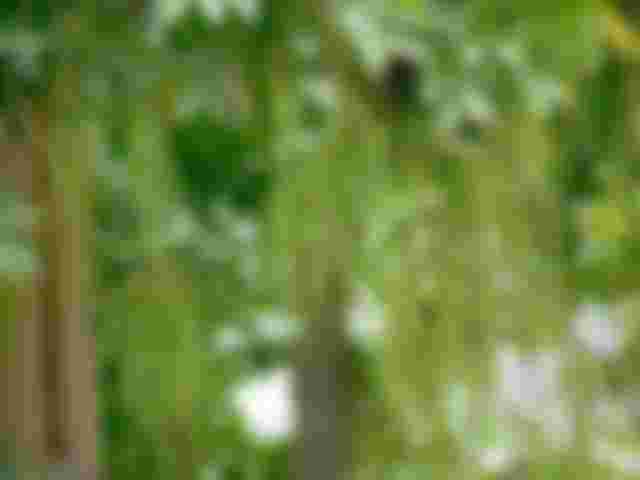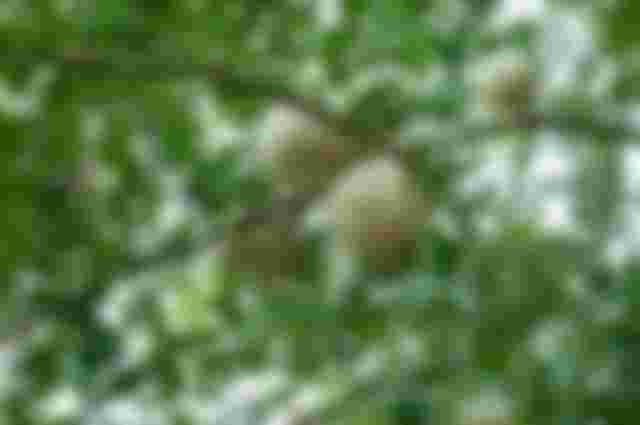Is the title a tongue-twister? In a manner of speaking, yeah! But my intention is not to give your mouth and its insides some exercise. What I’m thinking of doing in this article is to give you, my loyal reader some knowledge about someone medicinal benefits that could just be around the corner, or just within the neighborhood.
Here’s a triad of 3 trees (redundancy intended, for the sake of fun [laughs]) that can be your friendly neighborhood doctor.
Devil Tree
Its name is attributed to bad imagery, but it can really be your guardian angel in terms of curing your illness. Capable of growing up to 20 meters high, it has a furrowed trunk and whorled leaves, which are naturally shiny. The flowers which often grow numerously, seem to outshine any other feature of the tree.

It has abundant milky sap. The fruits are slender and cylindrically shaped. Within the are seeds which are about 4 mm long with cilicate hairs on the ends. The tree itself usually grows in thickets and forests.
It has the following medicinal benefits against:
- parasitic worms
- fever
- diarrhea
- dysentery
- asthma
- cardiac problems
- boils
- ulcers
- muscular pains
- rheumatic swellings
- earaches
- vitamin B1 deficiency
Usable Parts: bark, sap, leaves
Application:
In decoction, the bark of the tree can be used for purgative purposes. The same can also increase the secretion of milk in nursing mothers. The latex that can be extracted can serve as poultice for boils, ulcers, muscle pains and rheumatism issues.
When mixed with olive oil, 1 or 2 drops in the ear relieves earaches. When dried and powderized, the leaves can cure ulcers and skin problems.

Other Names:
Assamese – Satiana
Bengali – Chattin
Burmese – Taung Mayoe Pin
German – Schulboizbaum
Hindi – Chatian
Kannada – Maddale
Konkani – Santhnirooku
Malalayam – Pala
Marathi – Salvin
Sanskrit – Saptaparna
Santhali – Chatni
Tamil – Elilappalai
Telugu – Palaigh
Bael Tree
Known for its oval-shaped leaves and with the pleasant fragrance that emanates from its flowers, the Bael is one of the most highly-regarded trees in India. It could reach the height of up to 6 meters and bears rounded fruits that are greenish-white in color. In addition to the nice aroma that the flowers give, the fruits are also capable of giving the same.

It has the following medicinal benefits against:
- inflammation of the mucous membrane
- asthma
- fever
- unwanted mucus secretions from the bronchial tubes
- acute bronchitis
- constipation and jaundice
- inflammation of the eye
- depression
- indigestion
- irritation of the alimentary tract
- stomach pains
Usable Parts: roots, leaves, fruits
Application:
The decoction of its leaves can be used as a mild laxative for fever, catarrh, or the inflammation of the mucous membrane have a free discharge for asthma. The same can can be used in regulating problems with the bronchial tubes due to its febrifugal properties, which means it can act as an expectorant that can expel impurities therein.
The leaf juice can treat the abnormal accumulation of liquid in the cellular tissue accompanied with constipation and jaundice. Plastering the leaves in an eye inflammation can relieve the swelling. The same can also be applied in cases of conjunctiva with acute bronchitis.
The root bark in decoction can be used for treating fever, melancholia or any unhappy emotional state and heart palpitation. The unripe fruit can be used in dealing with abdominal problems. It prevents scurvy aids in digestion. It is also used in cases of chronic diarrhea or dysentery. It also clears out infections of the alimentary tract.

The ripe fruit is aromatic, which is ideal as an air freshener. When mixed with water, it may be taken by victims of chronic constipation, dyspepsia, indigestion, or any related discomfort. It may also serve as a mild laxative.
Other Names:
Assamese – Bel
Bengali – Bela
Burmese – Okshit
French – Be Lindien
German – Bhelbaum
Gujarati – Bil
Hindi, Marathi – Bael
Kannada – Bilparte
Konkani – Bello
Malalayam – Kuvalam
Oriya – Belo
Persian – Shul
Sanskrit – Vasaka
Sindhi – Bila
Sinhalese – Belli
Tamil – Vilvam
Telugu – Maradu
Urdu – Bel
Cashew
A common vegetation element in most tropical countries, the Cashew is one that doesn’t grow upright. Generally it has a crooked trunk. The leaves are oval in shape with rounded tips. The flowers are small and yellowish which seem to serve as crowns for the branches.

The petals are sometimes pink with stripes. As of the fruits, they are shaped likes pears which produces kidney-shaped nuts outside and under. For all its weird yet natural attributes, it is employed as an ingredient in many delicacies.
It has the following medicinal benefits against:
- diarrhea
- diabetes
- toothache
- sore gums
- dysentery
- improper flow of urine
- parasitic worms
Usable Parts: bark, leaves, fruits, gum
Application:
In decoction, the bark can be used for treating diarrhea, diabetes, swellings and mouth ulcers. Infusion of the bark and leaves cures toothaches, sore gums and dysentery. The juice that can be extracted from the pericarp can expel intestinal worms, it is also known for the juice of its ripe fruit that can treat dysentery.
The gum extracted from the bark can serve as an insecticide. In using it, you just have to be careful with a few things. It is believed that the oil from cashew nuts can be used in removing warts, blisters and ulcers. However, this act poses some real dangers.

Furthermore, the raw milk that comes from it must be avoided by pregnant women as it may provoke abortion as it is caustic and poisonous. But with thorough drying or roasting, the chemical properties within can be removed.
Other Names:
Bengali – Hijibadam
Burmese – Thi-Hoe-Thaylet
French – Amandes-Di’anacarde
German – Acajoubaum
Gujarati, Hindi – Kaju
Kannada – Geru, Bija
Konkani, Marathi, Punjabi, Sinhalese – Kaju
Malalayam – Andi Paruppu
Oriya – Lankabadam
Persian – Badami Phara Ngi
Sanskrit – Kajutaka
Tamil – Mundimi
Telugu – Jidi-Mamidi
Their medicinal values are greatly high, if they’re just standing around in your neighborhood, why not utilize them?






Didn't know this trees had so much benefits